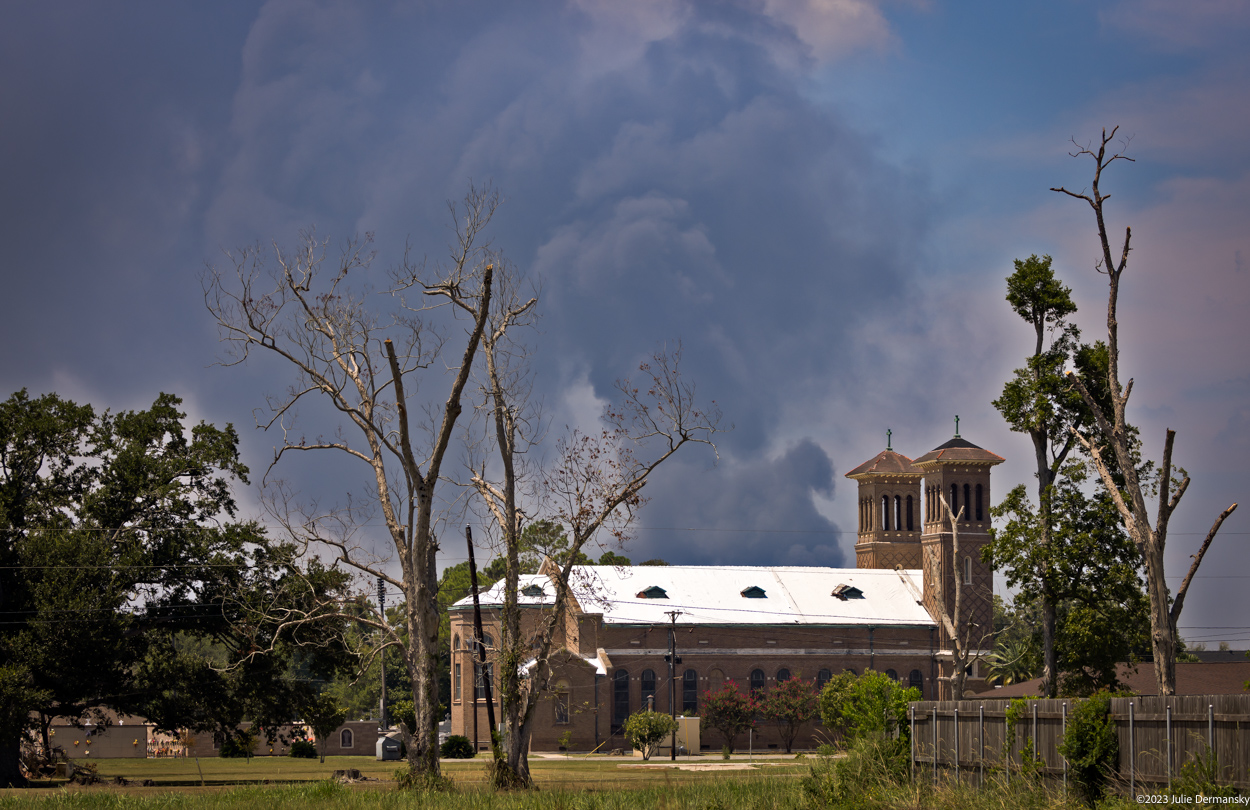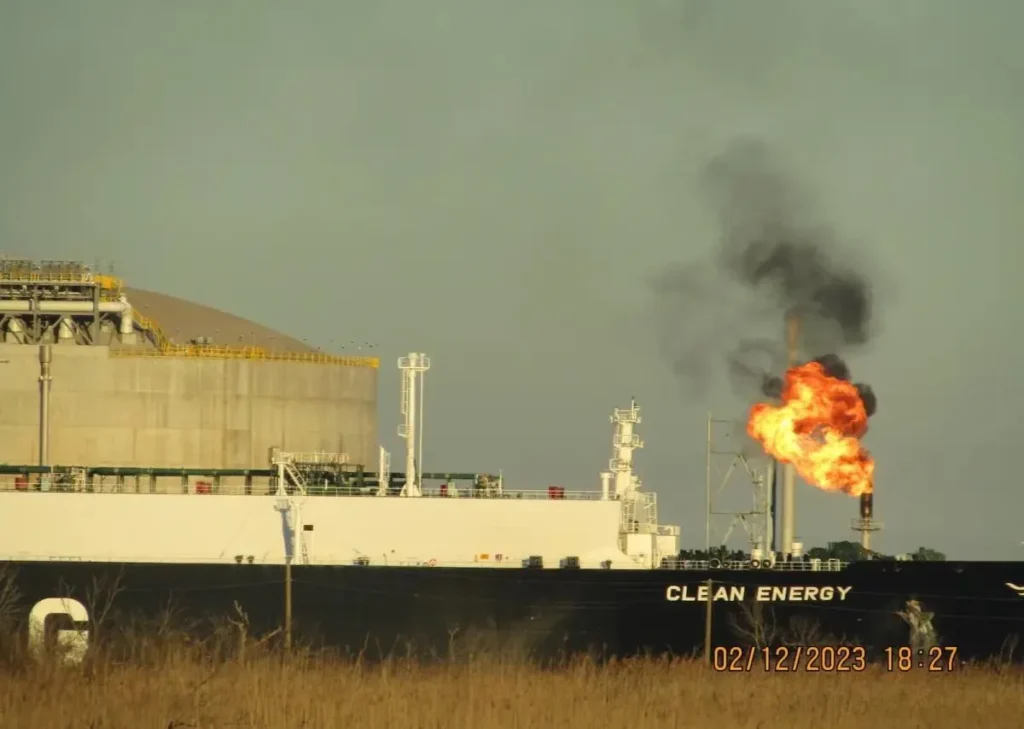Thick black smoke billowed and flames rose from two chemical storage tanks at the Marathon Petroleum refinery between Reserve and Garyville, Louisiana, on Friday. Geraldine Watkins saw the towers of smoke through the passenger seat window of a car that morning, while she was on her way to a court hearing about whether another tract of land in St. John the Baptist Parish, where Garyville is located, would be zoned for heavy industrial use.
Despite the alarming view, no community-wide alarms had sounded when a naphtha leak started a fire at the refinery earlier that morning. While parish officials declared a mandatory evacuation for all residents within two miles of the refinery, including two nearby schools, DeSmog’s Julie Dermansky got inside the two-mile evacuation zone across the river from the plant without encountering a road block. Cars continued to pass by the facility and workers at the neighboring Cargill plant stood on the Mississippi River levee and recorded the scene live on Facebook for more than an hour.
Watkins, who lives about 5 miles from the refinery, thought about the safety of her grandchildren, who were already on their way to school in the parish. She thought about the health of the people who live in the trailer park near the fenceline of the Marathon Petroleum refinery, and about how the smoke could trigger her own asthma.

Beyond immediate health concerns like asthma, Watkins and others in the community had concerns about longer-term health risks from the fire. Naphtha is a colorless flammable mixture distilled from crude oil to make solvents and gasoline. Exposure to this kind of hydrocarbon mixture can cause headache, dizziness, nausea, and vomiting, according to the Centers for Disease Control and Prevention. Repeated exposure to naphtha has been linked to nervous system damage in automotive workers. And naptha isn’t the only chemical of concern in an incident like this — others, including benzene, a known human carcinogen, need to be tested for, experts say.
However, both during the fire and in the days following, neither Marathon, the Louisiana Department of Environmental Quality, nor the U.S. Environmental Protection Agency have answered repeated questions from residents and reporters about which chemicals are being tested for. In the absence of information, residents struggle to assess the potential impacts to their health. While Marathon and other chemical companies are required to submit a letter to the state within seven days of an event detailing the root cause and details about how much chemicals were leaked, companies often request an extension for the report, meaning by the time the information does become available many have moved on.
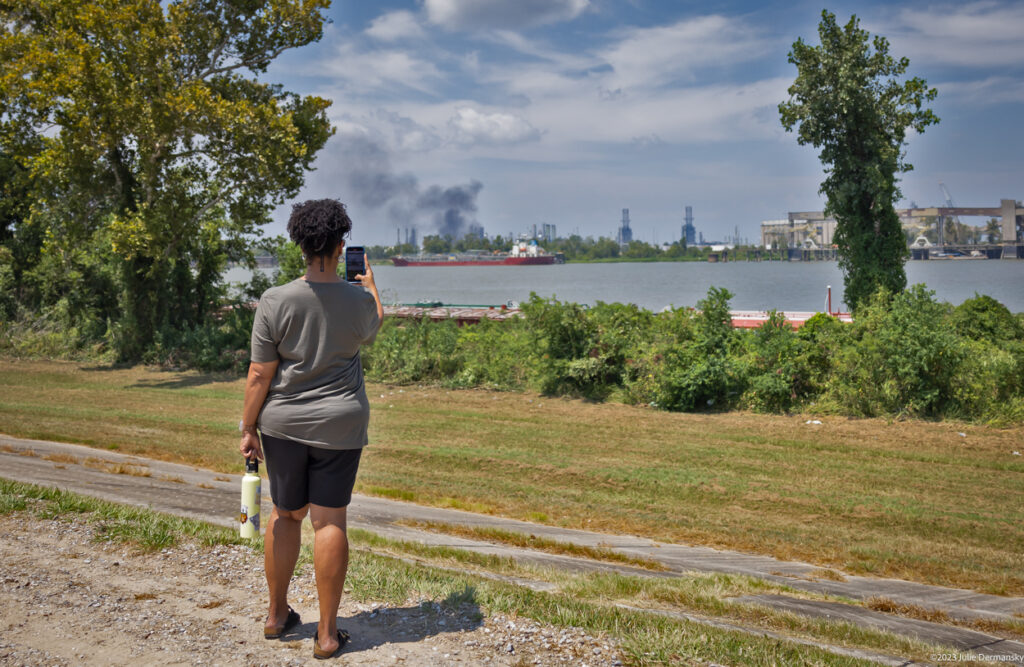
“I’m trying to figure out why did we hear nothing. We heard no siren, not even here,” Watkins said, recalling how she’s heard other chemical plants in the parish occasionally testing their emergency alarm systems. While the evacuation was lifted hours later and the fire at the Marathon refinery was fully extinguished Monday, Watkins said the experience made her once again question the parish’s ability to keep her family and her neighbors safe during industrial accidents. “We don’t stand a snowball’s chance in Hades,” she said.
The fire was so big that National Oceanic and Atmospheric Administration satellite imagery captured it. Although the fire was largely brought under control by Friday afternoon, it flared up on Saturday morning, sending more black smoke skyward. The Cargill employee who’d filmed the fire on Friday posted another live video to Facebook of it on Saturday, in which he noted that, once again, no alarms were triggered. All in all, firefighters fought back flames at the refinery for four days in 100-degree weather. At least one firefighter was treated for heat stress. A local elementary school remained closed Monday out of caution.
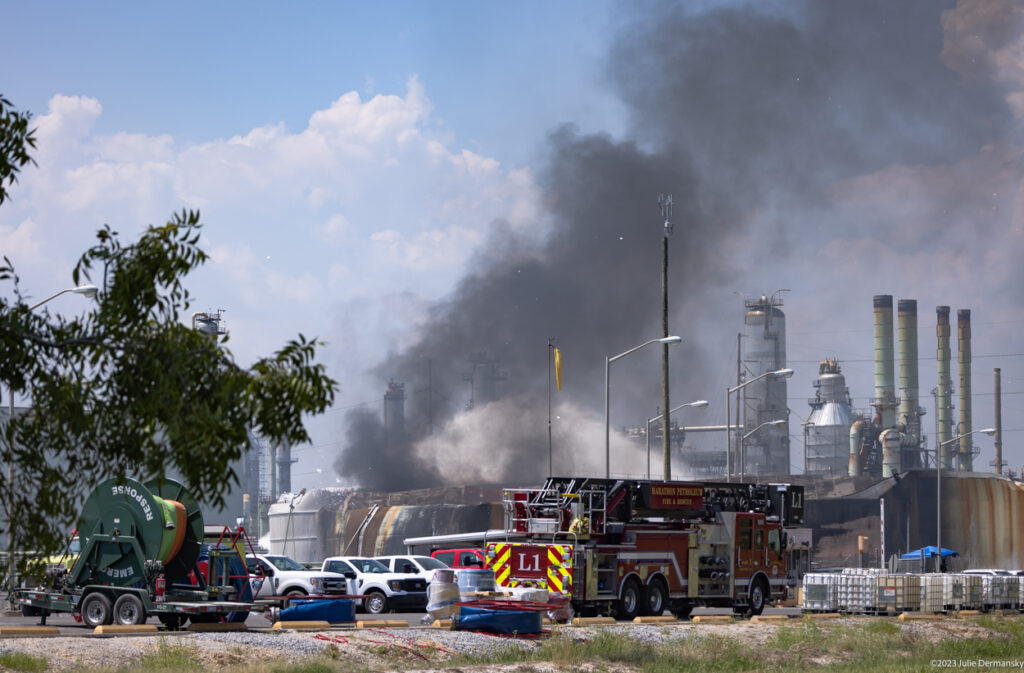
Greg Langley, a spokesman for Louisiana Department of Environmental Quality (LDEQ), said staff have been monitoring the air in the community adjacent to the facility with hand-held monitors. But Langley did not respond to questions about which pollutants the department was monitoring for, and suggested that a Marathon spokesman was the point person for information about the fire.
A call to the Marathon spokesman went unanswered and unreturned. While the company confirmed via email that the U.S. Environmental Protection Agency, LDEQ, and a third-party contractor were conducting air monitoring, Marathon also did not respond to specific questions about which pollutants were being monitored.
“As a precautionary measure, the refinery has operated at reduced rates during the response effort. A plan is being developed to return the refinery to normal operations, with safety as our core focus,” Marathon Petroleum spokesperson Joe Gannon wrote in an emailed statement.
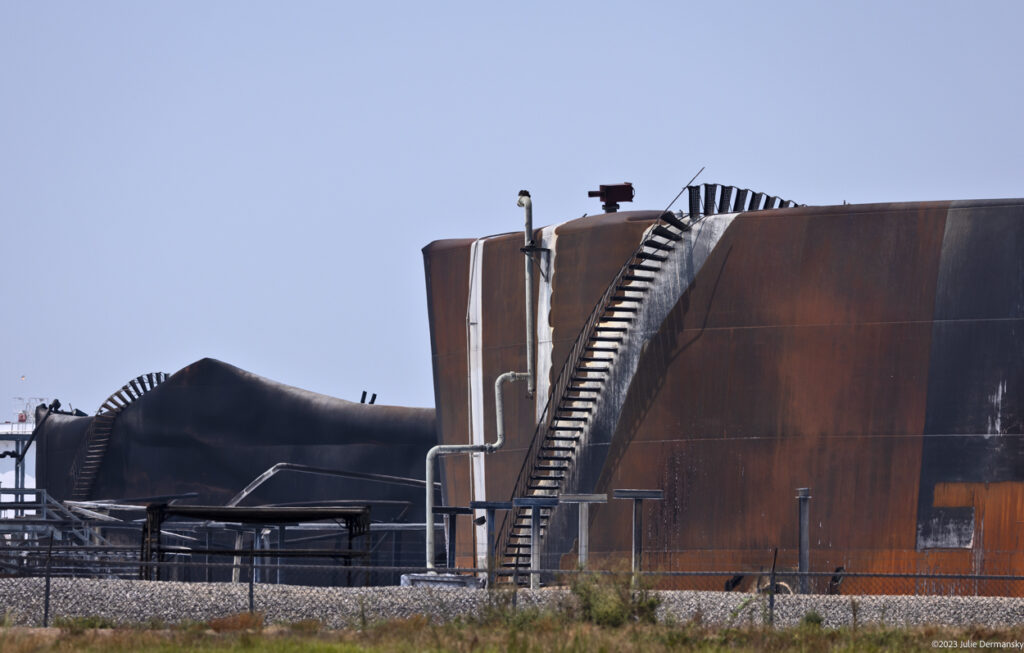
However, without information about which pollutants are being monitored, it’s unclear whether the air is or was truly safe to breathe for those who live and work in the area, said Wilma Subra, a renowned environmental scientist and toxics expert. The most accurate and detailed air pollution monitoring is done by collecting samples of the air near an industrial disaster in a canister to be analyzed in a lab. Subra said that in an incident like this, air monitoring efforts should include measures of naphtha and a whole host of volatile and semi-volatile organic compounds, a group of chemicals such as benzene that are associated with respiratory complications and cancers. “They are not providing any of that information,” she said, adding that most hand-held monitors cannot detect low-level concentrations of volatile organic compounds nor differentiate between types of VOCs.
Contractors for Marathon could be seen taking environmental samples in the area over the weekend. A t-shirt of one contractor indicated they worked for CTEH, the same contractor hired by Norfolk Southern to respond to the hazardous chemical train derailment in East Palestine, Ohio, in February. CTEH has been accused of allegedly concealing the public health risks of the derailment, as well as many other industrial disasters, including the BP oil spill.
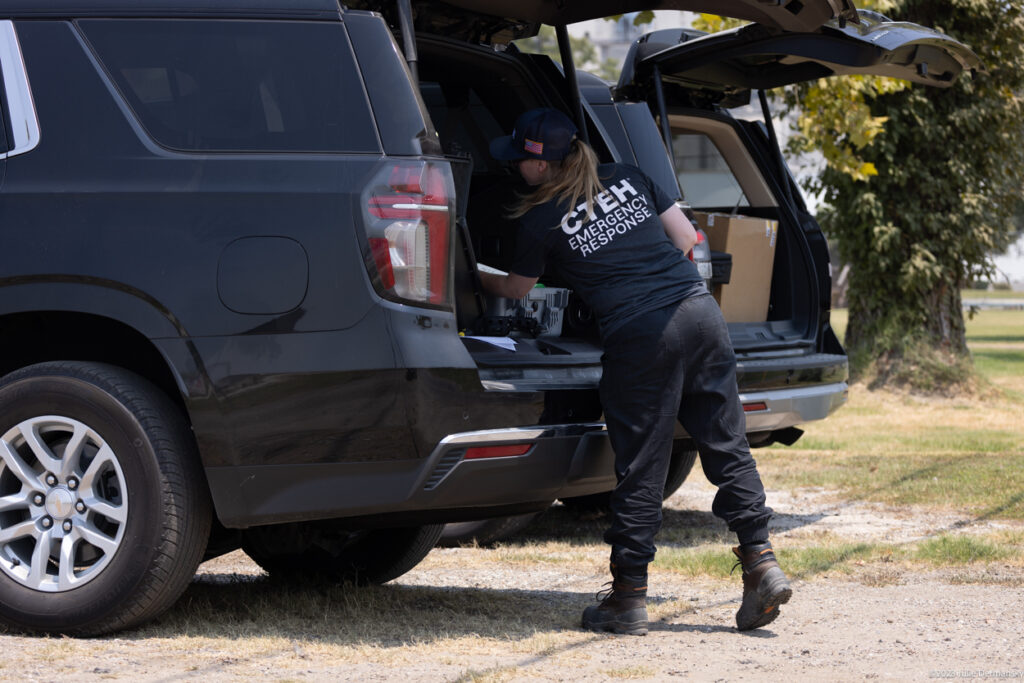
The fire at the Marathon Petroleum refinery on Friday comes after a number of recent incidents at the facility. In 2022, six workers were injured and one was killed in three separate accidents at the refinery. While the Occupational Safety and Health Administration initially fined the company $30,167 for one of those incidents, a February 2022 explosion at the facility that injured four workers, the agency later decreased the fine to $14,502. OSHA did not respond to a question about why it reduced the fine, but said it is investigating the recent fire.
Parish officials have circulated a toll-free number for community members impacted by the fire to call for “assistance,” but the number goes to a Marathon representative. Watkins called the number over the weekend. “What service are you going to provide for me?” she asked the operator, who said they would take down her number and have someone call her back. At the time of publication, although Watkins had received a call back, she still did not know what toxins she could have breathed in.
Subscribe to our newsletter
Stay up to date with DeSmog news and alerts


